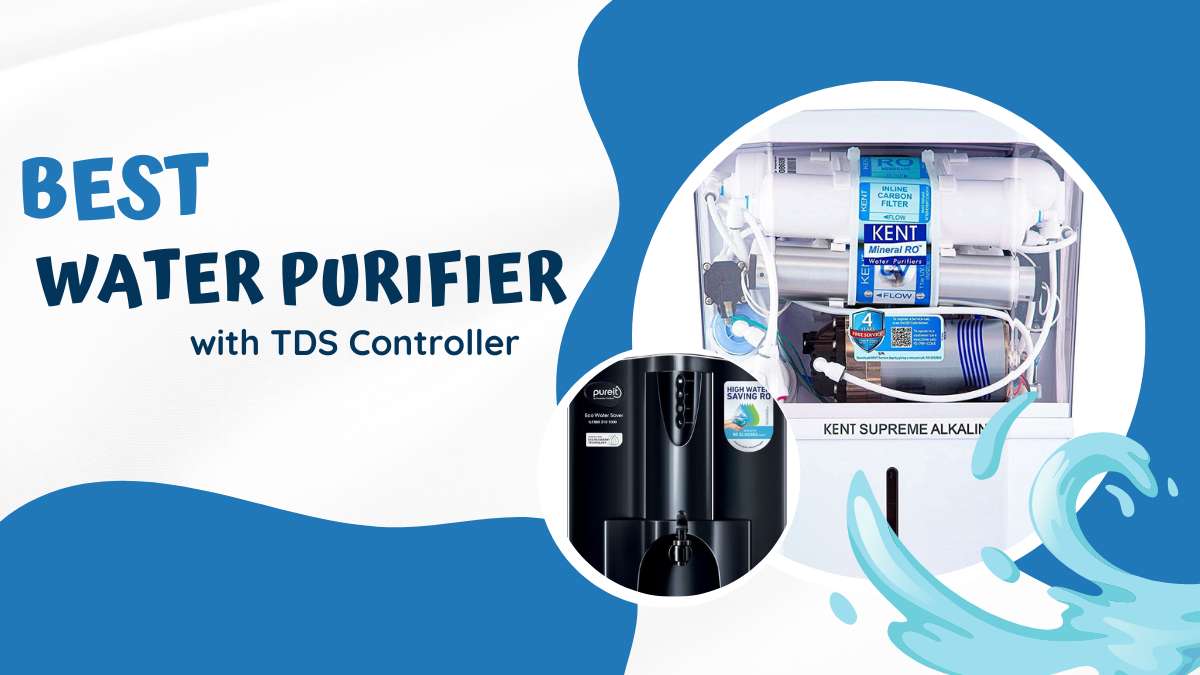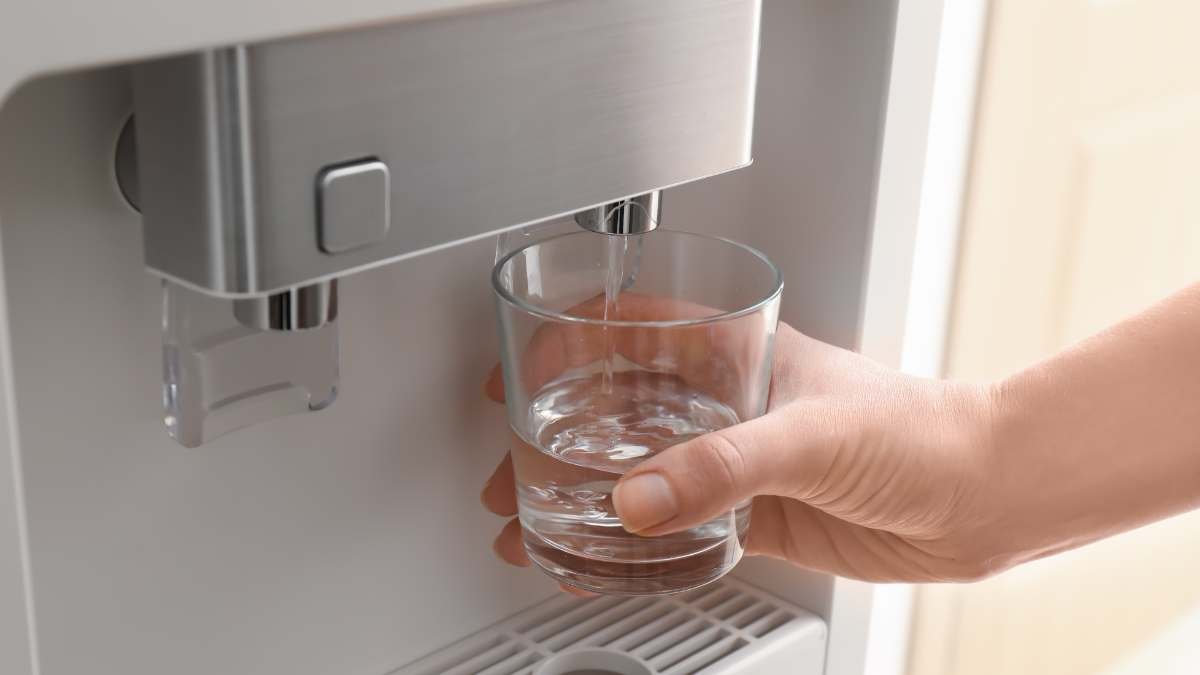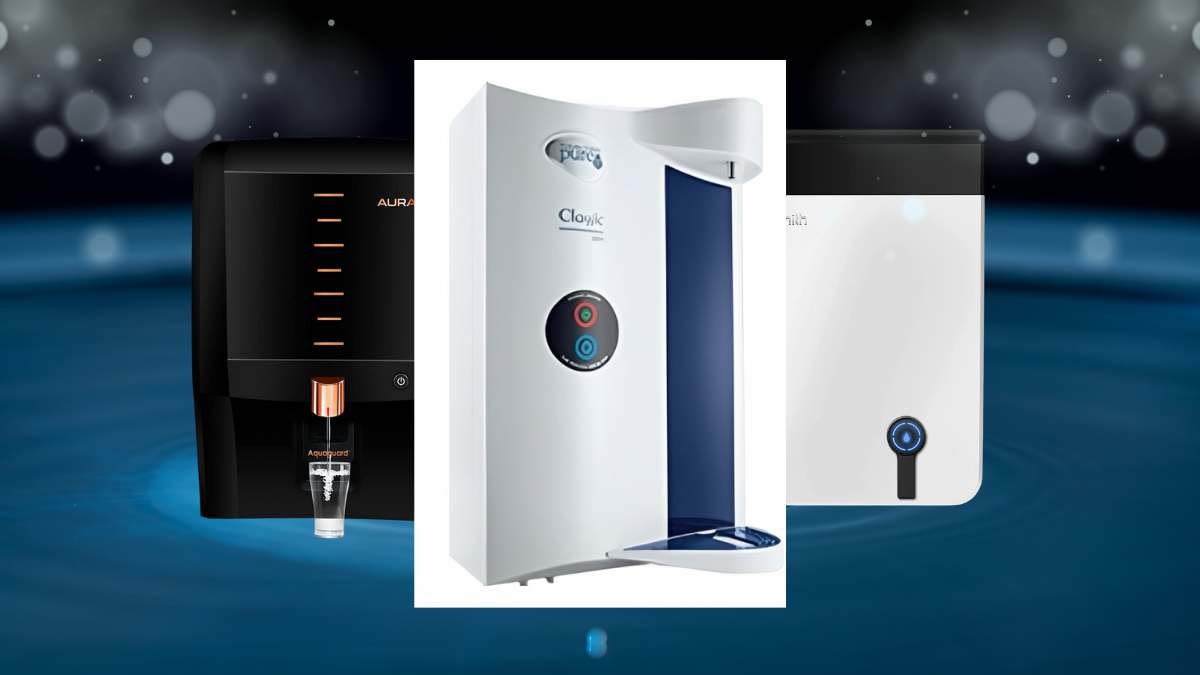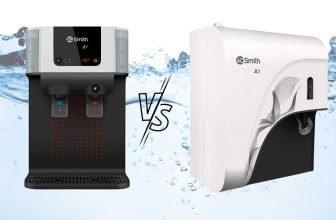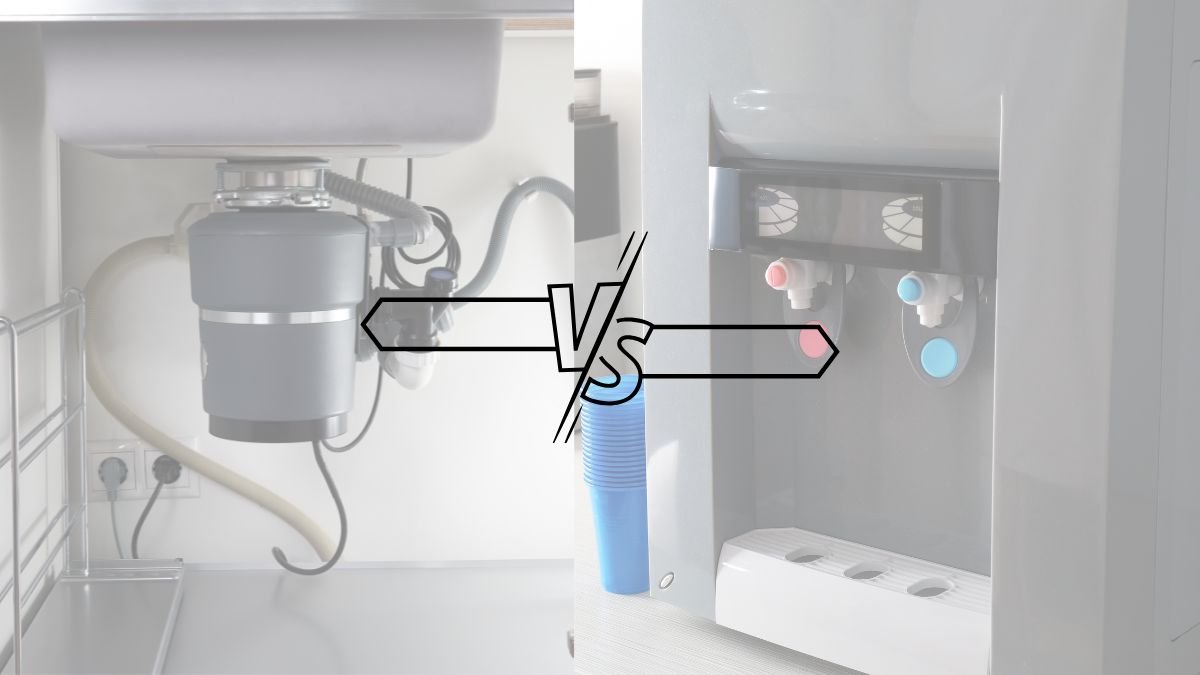
Under sink and countertop water purifiers take different approaches to filtering water for drinking and cooking. This comparison examines the key differences in installation, capacity, maintenance, filtration performance and cost to determine which system works best for your needs.
How Under the Sink Water Purifiers Work
Under sink water purifiers, also known as inline water filtration systems. This type of water purifier are installed out of sight under the kitchen sink and connected directly to the water supply line. This allows them to filter water at the point of use while taking up no counter space.
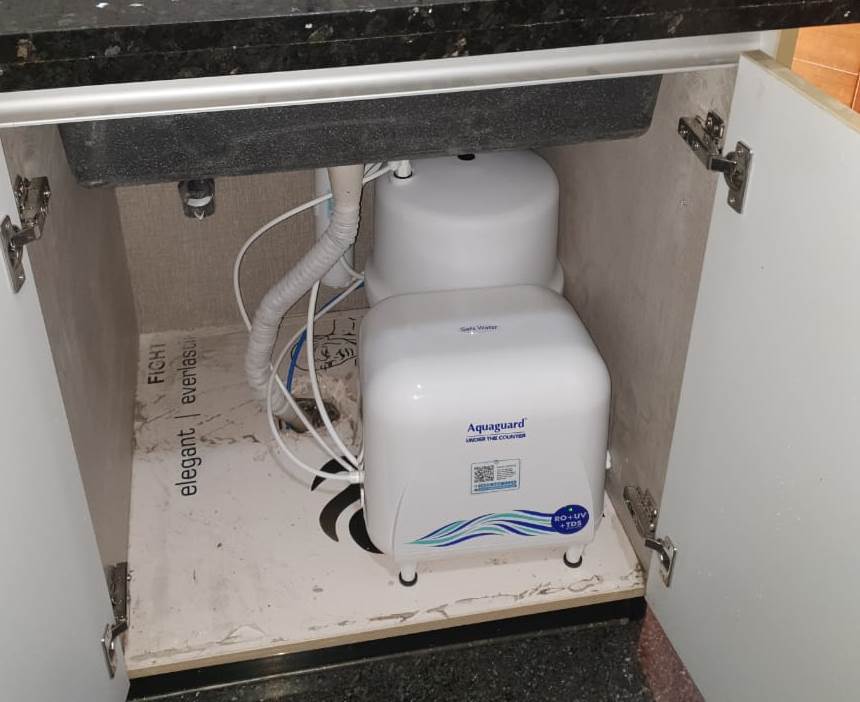
Most under sink systems use reverse osmosis as the primary filtration method.
Benefits of Under the Sink Water Purifiers
- Space saving – This type of water purifier Installed under the sink in the cabinet, save valuable counter space.
- Hidden, seamless design – The under-sink location gives a clean look compared to countertop units.
How Normal Water Purifiers Work
Normal or countertop water purifiers sit visibly on the kitchen counter or can be wall mounted. They are not connected directly to the water line, but instead work batch-wise to filter water that is poured into their reservoir.
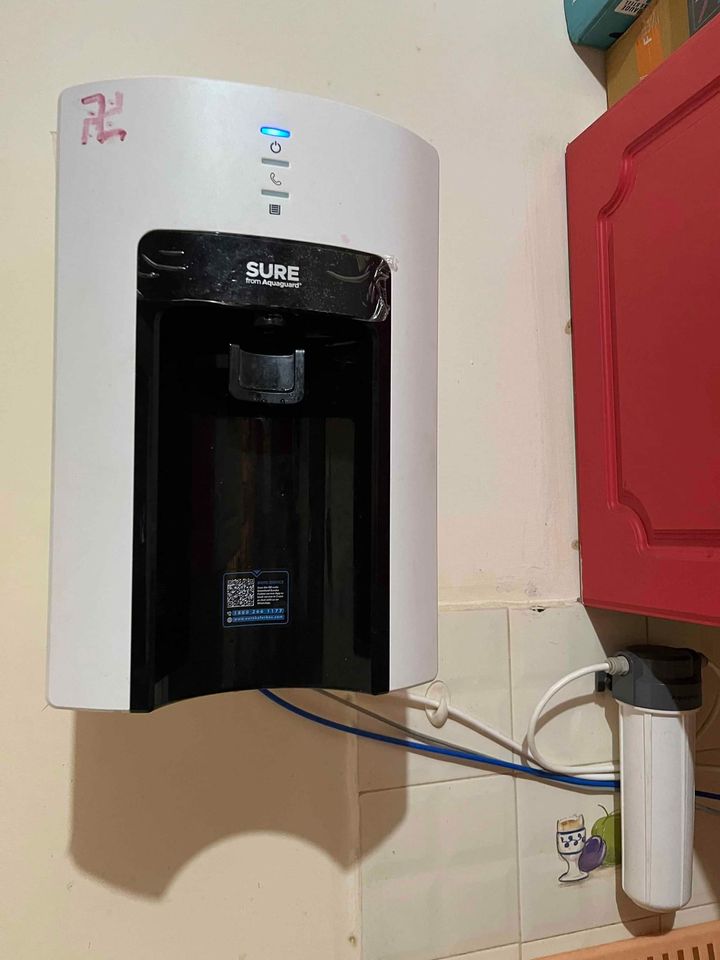
Countertop purifiers commonly use a combination of RO, activated carbon filters and UV light to remove contaminants like chlorine, particulates, metals, microbes and odours from a fixed amount of water at a time. The water passes through the filtering media and is stored in a tank ready for dispensing.
Benefits of Normal Water Purifiers
- Easily accessible clean water – The stored purified water is ready to drink.
- Flexible installation – They can sit on counter or be mounted on wall.
Comparison of Under The Sink and Normal Wall Mounted RO Water Purifiers
Here is a comparison table of the Under the Sink Aquaguard UTC RO+UV+MTDS and the normal water purifier Aquaguard Sure Delight NXT 6-Stage. It could help you understand the basic technical differences between them.
| Feature | Aquaguard UTC RO+UV+MTDS | Aquaguard Sure Delight NXT 6-Stage |
| Weight | 10.2 kg | 5 kg (approx) |
| Purification Technology | RO+UV+MTDS | RO+UV+UF |
| Dimensions (WxDxH) mm | 275 x 285 x 195 | 320 x 270 x 480 |
| Installation Type | Under the counter | Wall mounted / table top |
| Storage Capacity | 8 litres | 6 litres (Approx) |
| TDS Range | 1 to 2000 mg/L++ | 0 – 2000 mg/L |
| Input Water Pressure | 0.3 to 3.0 kg/cm² | 0.3 to 3 kg/cm² |
| Input Water Temperature | 10°C – 40°C | 10 – 40°C |
| Input Water Chlorine (Max) | 0.2 mg/litre | 0.2 mg/L |
| Input Water Turbidity (Max) | 5 NTU | 5 NTU |
| Input Water Iron (Max) | 0.1 mg/litre | 0.1 mg/L |
| UV Lamp Power | 4 watts | 4 Watts |
| Life of UV Lamp | 5000 burning hrs | 5000 burning hours |
| Power Consumption | 48 watts | 40 watts (max) |
| Operating Input Voltage | 150 VAC to 280 VAC, 50 Hz | 150 – 250 V AC / 50 Hz |
Installation
Installing an under sink system requires professional plumbing assistance, while countertop filters are simple DIY setups.
Under sink purifiers necessitate complex connections to existing kitchen plumbing lines that are best handled by a knowledgeable plumber. The installation process typically takes 1-2 hours. Expect fees of ₹1500 or more for this professional expertise in addition to the system cost.
In contrast, countertop filters only need to be unpacked, placed or mounted in the desired location, and plugged into a power outlet. An adapter connects the water inlet without plumbing work. The entire setup takes a homeowner just 10-15 minutes with no special skills required.
| System | Installation Time | Expertise Needed | Cost |
| Under Sink | 1-2 hours | Plumber | ₹1500+ fees |
| Countertop | 10-15 minutes | None | No added cost |
For DIYers who want to get their filtered water solution up and running without pros, countertop systems offer fast, simple setup. Under sink installs require paying for plumbing help.
Space and Aesthetics
Since under sink systems are hidden away, they free up counter space in the kitchen for other uses. Their lack of visual clutter offers a seamless, clean look.
Normal purifiers take up permanent counter space or wall space, though some compact designs have smaller footprints. Their visible water tanks can impact kitchen aesthetics.
Capacity and Flow Rate
The capacity and flow rate of purified water differs greatly between continuous under sink systems versus limited capacity countertop tanks.
Under sink systems utilize direct connection to plumbing to produce a steady, smooth flow of filtered water on demand, unlimited by tank size. This allows production of as much water as needed for drinking, cooking, or other uses.
Countertop purifiers store a fixed amount of treated water in internal tanks that typically hold 1-2 liters. This restricted capacity means frequent refilling downtime as the system must stop purified water production to allow the tank to slowly refill after it’s emptied. Waiting occurs until the next batch is ready.
| System | Capacity | Flow Rate |
| Under Sink | Unlimited | Continuous steady flow on demand |
| Countertop | 1-2 liters | Fixed by tank size, interrupted flow |
For large families, under counter RO systems provide continuous filtered water output keeping pace with demand. Countertop units work well for individual use but may involve frequent waits during tank refilling.
Annual Maintenance Cost
Under the sink R0+UV Vs Normal R0+UV Water Purifier annual maintenance cost.
| Feature | Under Sink RO+UV | Normal RO+UV | Notes |
| Pre-filter | ₹400 – ₹1,000 | ₹400 – ₹1,000 | Typically replaced every 6-12 months |
| Sediment filter | ₹500 – ₹900 | ₹349 – ₹600 | Typically replaced every 6-12 months |
| RO membrane | ₹799 – ₹3,000 | ₹850- ₹2,500 | Typically replaced every 12-24 months |
| UV lamp | ₹289 – ₹1195 | ₹199 – ₹800 | Typically replaced every 12-18 months |
| Post-carbon filter | ₹299 – ₹800 | ₹299- ₹800 | Typically replaced every 6-12 months |
| Service charges | ₹500 – ₹1,500 per visit | ₹500 – ₹1,000 per visit | Depends on service provider and issue |
| Total Annual Cost | ₹2,800 – ₹8,000 | ₹2,600 – ₹6,700 | Varies depending on water quality, usage, and specific model |
Cost
Under sink purifiers involve a higher initial investment but lower long-term filter costs similar to countertop RO models.
Typical under sink RO systems cost ₹10,000-₹20,000 for the unit itself. Professional installation fees add another ₹1500+. Under sink filter replacements run ₹2,800-₹ each and are needed annually.
In contrast, countertop purifier units range from ₹3000-₹10,000 in initial purchase price. No installation is required. Their replacement filters only cost ₹500-₹1500 apiece, though these tend to need changing more frequently every 6-8 months.
| System | Initial Cost | Installation | Filter Cost | Frequency |
| Under Sink | ₹10,000-₹20,000 | ₹2000-₹5000 | ₹2,800-₹8,000 | Annual |
| Countertop | ₹5000-₹25,000 | None | ₹2,500-₹6,000 | 6-8 months |
While under sink systems require higher startup costs, their filter replacement costs are similar to normal RO.
Types of Filtrations
Under sink reverse osmosis systems combine multi-stage filtration using sediment pre-filters, RO membranes, and activated carbon post-filters. This removes up to 99% of over 1000 contaminants including chemicals, heavy metals, microbes, and dissolved mineral salts.
Countertop purifiers primarily employ single stage filtration with activated carbon block cartridges for basic particulate and chlorine removal. Some add UV light disinfection which inactivates microorganisms. They remove around 99% of common contaminants like dirt, rust, and microbes.
| System | Filtration Method | Contaminants Removed | Removal Rate |
| Under Sink | Multi-stage (RO, carbon, sediment) | 1000+ (chemicals, metals, microbes, salts) | Up to 99% |
| Countertop | Multi-stage stage (RO+ carbon, some UV) | Particulates, chlorine, microbes | Up to 99% |
Under sink reverse osmosis filtration offers superior contaminant removal over the basic single stage filters used in countertop models.
Conclusion
Under sink and normal water purifiers both improve water quality and safety with filtration, but have major differences when it comes to installation, capacity, maintenance and cost.
Under sink purifiers are ideal if counter space is limited and you want advanced reverse osmosis filtration, despite the higher upfront cost.
Normal purifiers suit those looking for an affordable, easy to maintain option with flexible placement, though filtration is more basic.
Consider your specific needs, budget and kitchen setup to decide between under sink or normal water purification. Reliable clean water on demand is worth the investment in either system.



